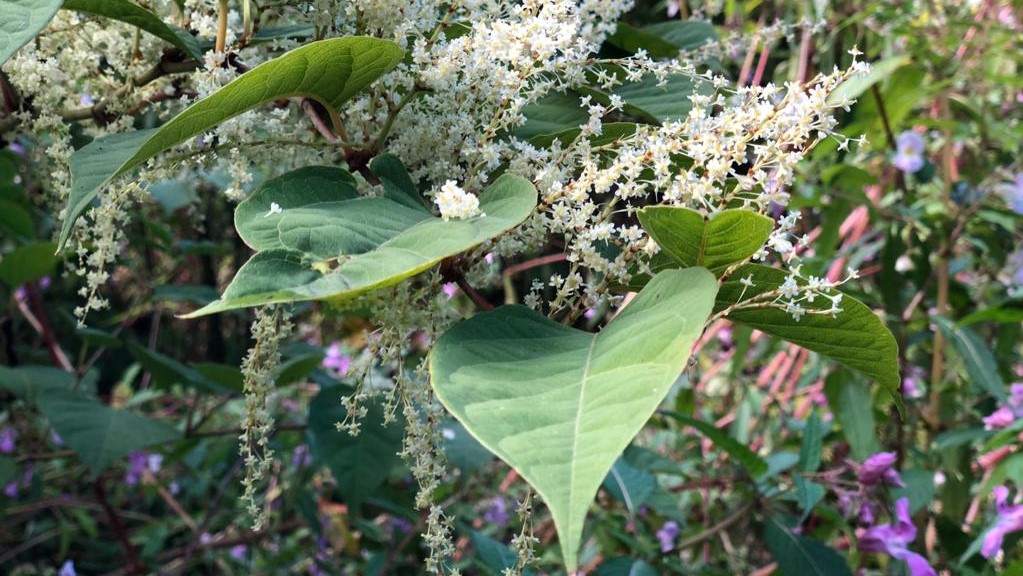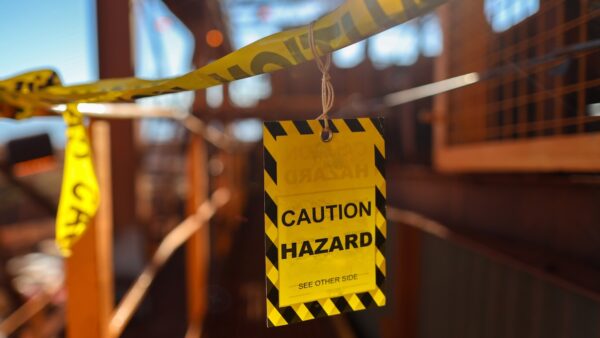
Drying out Japanese knotweed has a 100% success rate in killing it under lab conditions, a new study by Aecom, the National University of Ireland, Galway, and the University of Leeds has found.
The study concluded that the removal of moisture could act as a potential control strategy for smaller infestations of the invasive weed.
It found that incorrect herbicide treatment cannot control the growth and regeneration Japanese knotweed, but that fully drying the plant material in a lab environment allowed it to be returned to the soil without risk of regrowth. The research also showed that if there are no nodes attached to the rhizomes, there is no regeneration.
Japanese knotweed can grow up to two to three metres in height and is able regenerate from small fragments of plant material. It stubbornness means that it can cause problems with mortgage acquisition in the UK.
The study, published in the journal PeerJ today (12 August 2021) investigated the ability of crowns (underground mass from which rhizomes and shoots emerge) and rhizomes with different numbers of nodes to regenerate successfully from three sites in Yorkshire and Lancashire in the north of England. Two of the sites had been subject to herbicide treatment for two years prior to sampling and the third site had no history of herbicide treatment.
Plant size key
The study found that the success of regeneration is related to plant fragment size, with larger fragments more likely to successfully regenerate and, for rhizomes, if there is no node, there is no regeneration. It was also found that the removal of moisture on living material resulted in 0% regeneration after plant material was dried and replanted.
Senior author of the study, Dr Karen Bacon, lecturer in Plant Ecology, Botany and Plant Sciences, Ryan Institute, NUI Galway, said: “Japanese knotweed is one of the most invasive plant species in the world and has major negative impact on ecology and biodiversity. The findings of this study that showed virtually no difference between the regrowth of treated and untreated Japanese knotweed samples suggest that herbicide treatment, which is often the most suitable approach to tackle the species, is not always being done effectively.
“We also show clearly that the size of the plant fragment is critical to the initial regrowth, with smaller fragments producing much smaller regrown plants. Additionally, if there are no nodes, there is no regeneration, which may suggest potential management strategies in the future. This also highlights that small infestations and plants should not be viewed with the same concern as larger ones and that rapid management should be a goal of tackling this problematic species.”
Dr Bacon added: “Our finding that the removal of moisture has a 100% success rate on killing Japanese knotweed plants and preventing regrowth after they were replanted also raises an important potential means of management for smaller infestations that are common in urban environments. This requires additional field trials, which we hope to undertake in NUI Galway soon.”
Dr Mark Fennell, associate director at Aecom and co-author of the study, said: “Our latest research sought to add to existing knowledge about how to manage and remove Japanese knotweed. Our key finding, that drying out the plant effectively kills it, should provide reassurance to landowners that the plant is not as indestructible as is often stated. While this invasive species remains a problem plant that can have a negative impact on biodiversity, our research provides a better understanding of the plant, paving the way for the development of more efficient and cost-effective ways of dealing with it. We hope our research helps to challenge some of the popular stigma that surrounds Japanese knotweed.”
Dr Karen Bacon and Dr Mark Fennell are both members of the Japanese knotweed specialist group advising the Royal Institute of Chartered Surveyors. The new guidelines are currently out for public consultation with the hope that final versions may be released later in the summer or early autumn.
Comments
Comments are closed.












The conclusions are very commonsense in that if you deprive an organism of food it will suffer and perhaps die.
Plants need water to feed moving substances from the soil into & up the plant.
How do you dehydrate Japenese Knotwood growing outside in a garden which is exposed to the elements?
Do the stems have thorns?
No, there are no thorns. I would probably place on a tarp and cover if inclimate weather should arrive.
Thanks for the article. Great information. I have a big area to tackle. At least I know if I get hungry while ridding of it, it’s etible.
DUH I think you will find dehydration will kill everything its not rocket science. They fail to mention How you’re supposed to dehydrate something that’s in your garden and will be hydrated everytime it rains. Perhaps the people who did this study should stick to finding out why corn flakes turn soggy in milk 🤦♂️
Great to see how this university spent the massive grant they got to investigate this. Starve ANYTHING plant, animal or human you surely will have result of death! Well done for finding this out. Money defo well spent! Lol
I have a big area to tackle also, on a riverbank yet(!), so this is welcome news. I’ve been burning the stalks, and digging up the rhizomes and doing the same where possible …. Although I do have to keep after it, this approach seems to help.
Agree with Paul Triggs that dehydration will tend to kill most living things. The article fails to identify specific and successful methods to achieve good results.
Paul Triggs,
Have you actually read the report?
We have issues with it here in New Hampshire. USA. As had been said by others, drying is not an option for removal in most settings. Sure, you can cut and burn the aboveground vegetation, but total removal would require over-excavating an area, and screening and roasting the soil. Very labor intensive for an individual.
Well I could have told you that aged Five. As posted previously how on earth do you dehydrate the plant growing in and outside your boundary.
Please do not waste money telling us a plant dies 100% when fully dehydrated. What idiot would think otherwise. Oh wait sending it out into space kills it 100% effectively too!
I have a chemical bought from Amazon, just spray it on leaves
The study found that in lab conditions, dehydration killed the plant. That’s great but you’ve got to get it all out the ground first! The roots can go down by a couple of metres and you only need to leave a thumb size chunk in the ground for it to regenerate, so this “research” is misleading. You can’t just pull it out the ground, it’s not that easy.